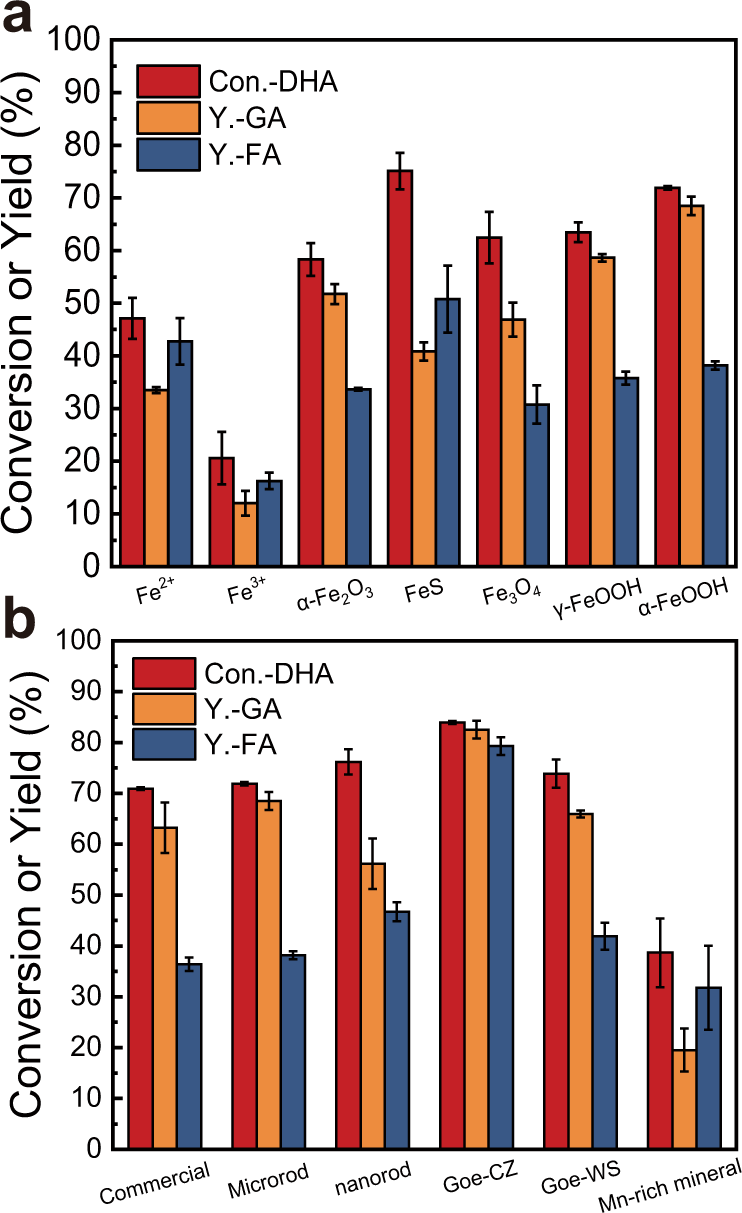

It should be noted that AO7 was difficult to be degraded in the PMS alone, PMS/US and NiOx/PMS systems, as the degradation rates were only 2%, 2% and 33% in 15 min, respectively. With the extension of reaction time, Co-NiOx/PMS produced ~100% AO7 removal in 5 min but CoOx/PMS in 10 min. In addition, AO7 was degraded about 11% in 3 min in the NiOx/PMS system. However, in the CoOx/PMS, Co-NiOx/PMS, and Co-NiOx/PMS/US systems, the AO7 degradation was significant and 70%, 94%, and even nearly 100% AO7 was degraded in 3 min, respectively. As shown in Figure 5(a), for the reaction carried out in the PMS alone and PMS/US, negligible change in AO7 concentration was observed, and only ~2% of AO7 was degraded in 3 min at these systems. In order to examine the enhancement of oxidation ability during the PMS activation process by Co-NiOx and US, the degradations of AO7 in PMS alone, PMS/US, CoOx/PMS, NiOx/PMS, Co-NiOx/PMS and Co-NiOx/PMS/US system were investigated. was the primary reactive oxidant for AO7 degradation.OH) increases with the increase of initial pH and SO 4 −.Last but not least, quenching studies was conducted which indicated that the amount of hydroxyl radicals ( The AO7 removal in these systems follows first order kinetics. This study also focused on some synthesis parameters and the system reached the maximum efficiency under the condition when = 0.4 mM, = 0.28 g/L, Pus = 200 W. Moreover, ultrasound (US) can increase the degradation rate of AO7 and US/Co-NiOx/PMS system. Therefore, it proved that Co-NiOx catalyst was more effective than CoOx to activate PMS.

The characterization results indicated that the ingredient of the catalyst had been changed and the amount of surface hydroxyl increased significantly with the addition of Ni. The catalyst was characterized by X-ray diffraction (XRD), X-ray photoelectron spectroscopy (XPS), Fourier transform infrared spectroscopy (FT-IR) and transmission electron microscopy (TEM). with Acid Orange 7 (AO7) selected as a radical probe.A Co-Ni mixed oxide nanocatalyst, which was prepared by the sol-gel method, was employed to activate peroxymonosulfate (PMS, HSO 5 −) to produce SO 4 − ) resulting in acceleration of organic pollutants degradation in aqueous environments.Sulfate radical-based advanced oxidation processes have had considerable attention due to the highly oxidizing function of sulfate radicals (SO 4 −


 0 kommentar(er)
0 kommentar(er)
